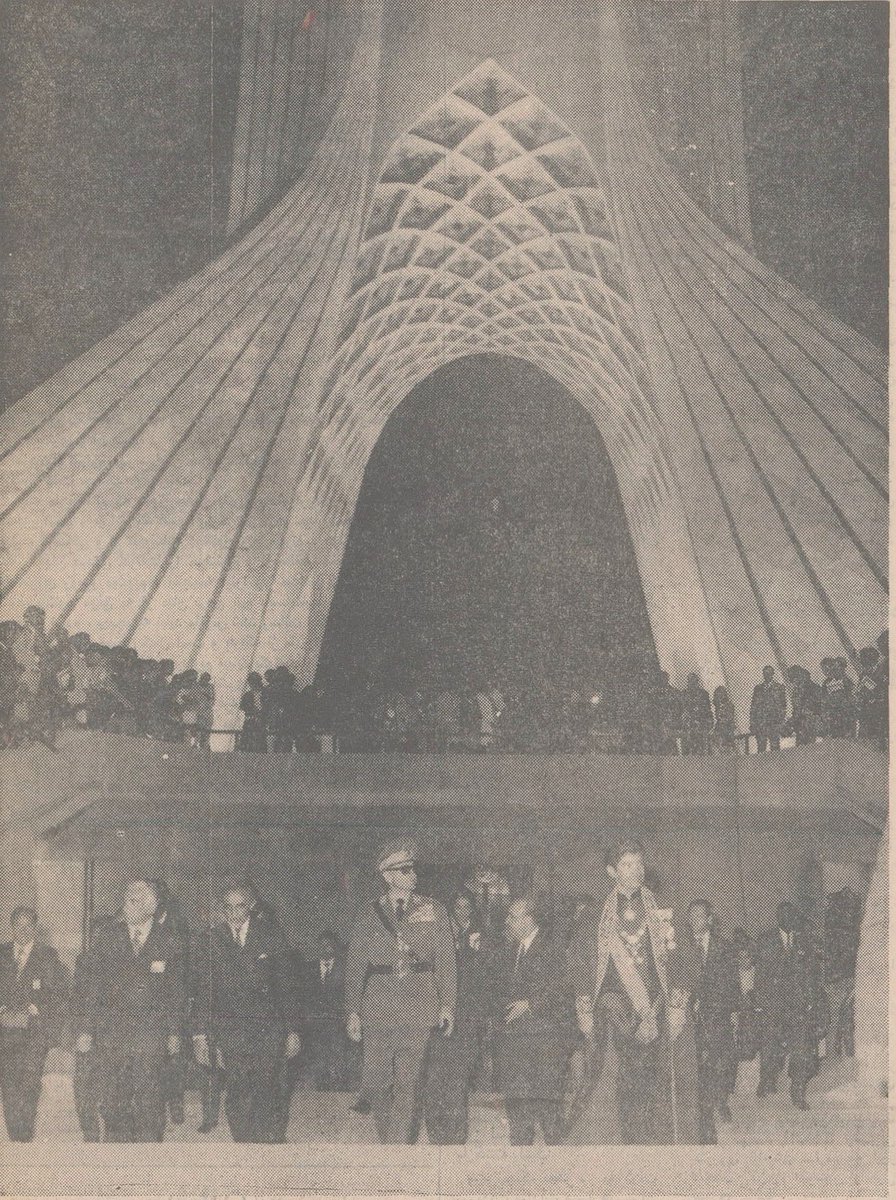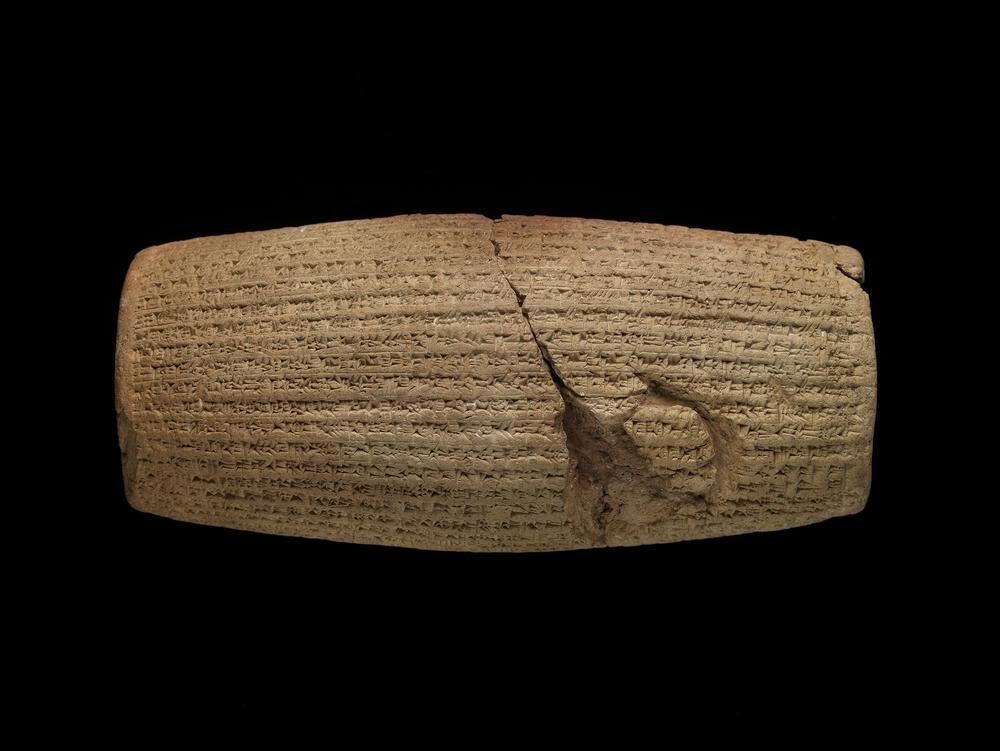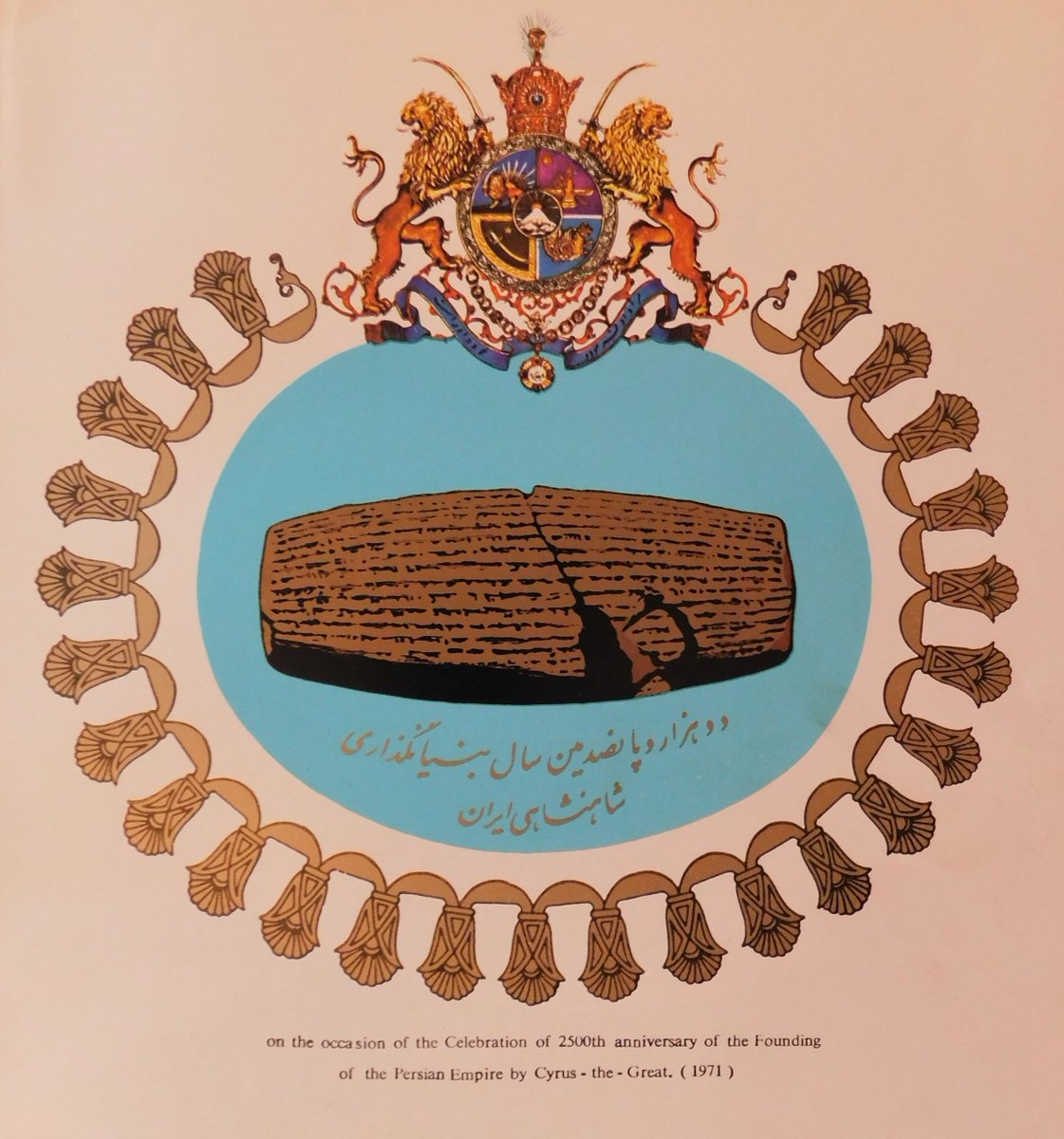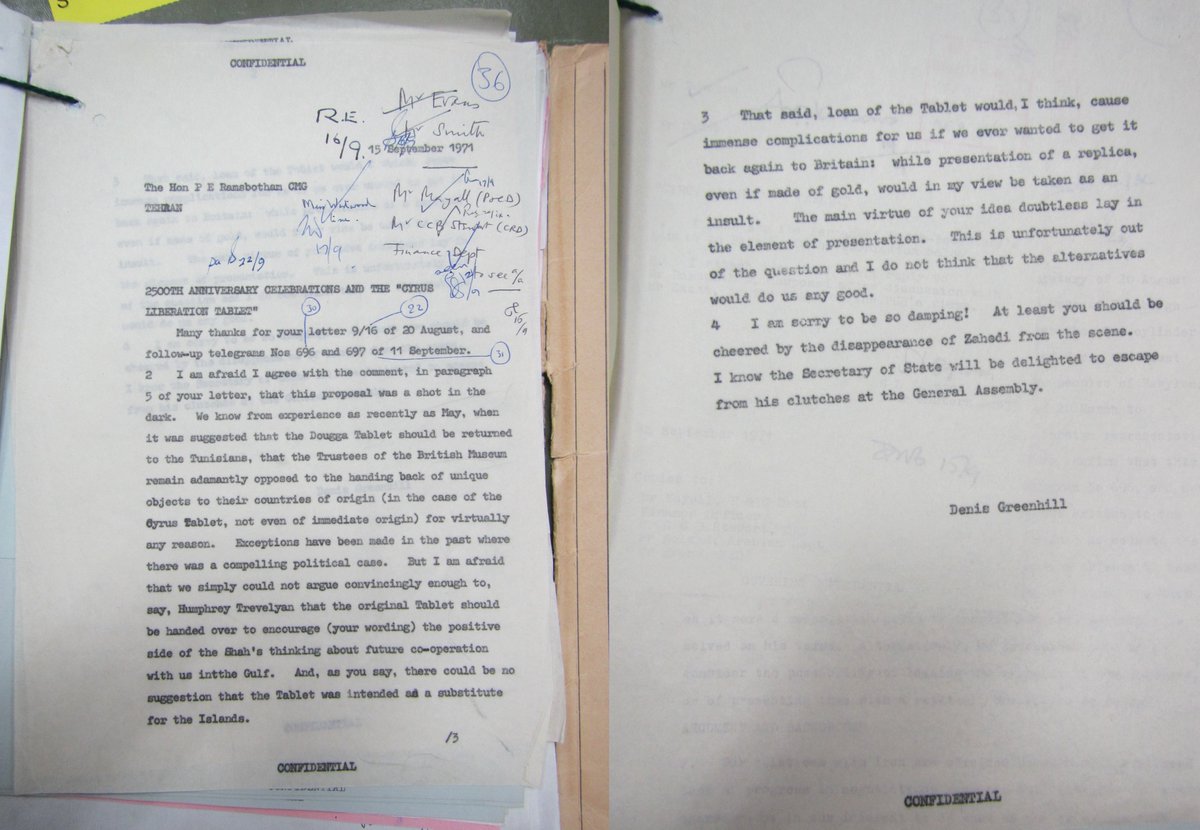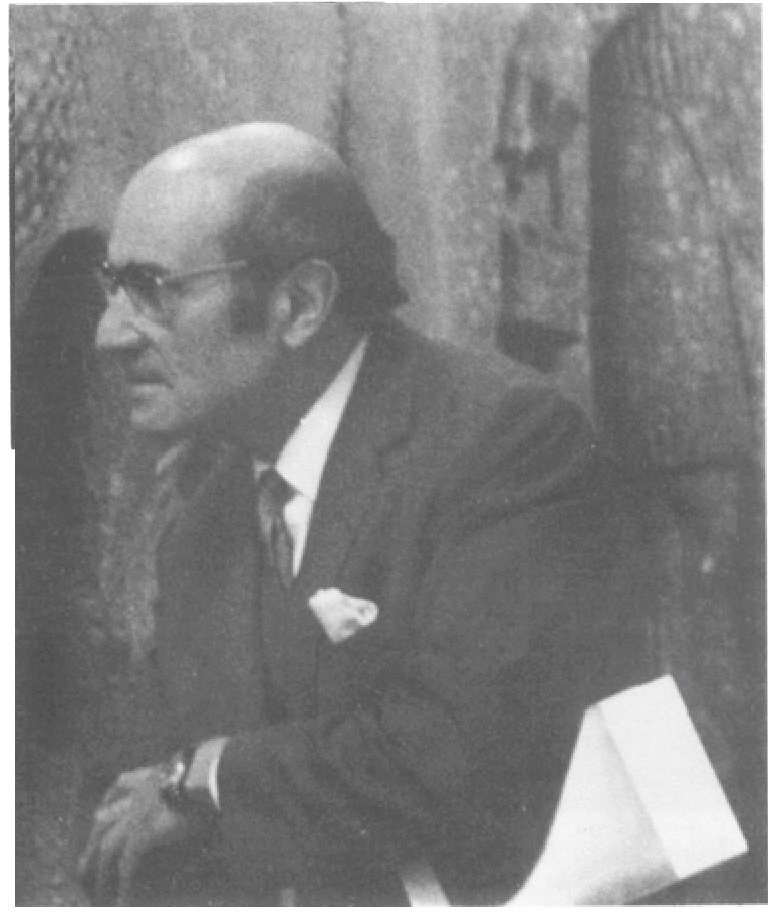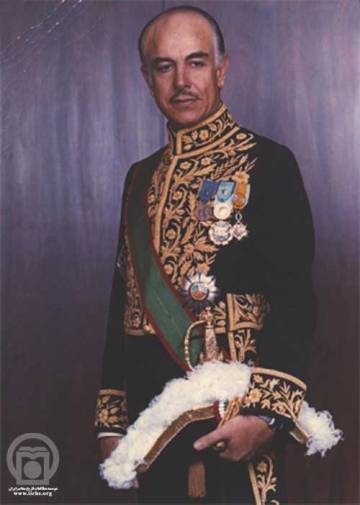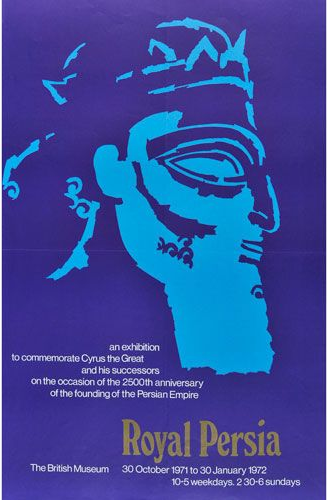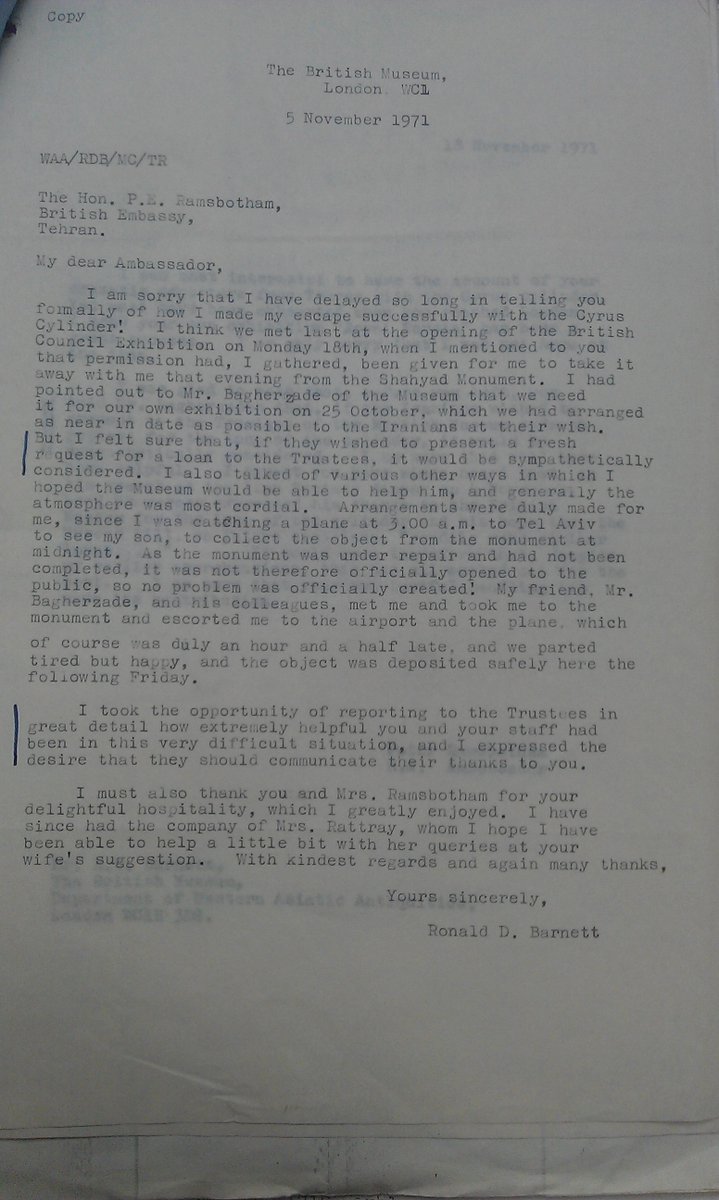On 16 October 1971, the Shahyad Tower was inaugurated in Tehran. In the tower’s museum, the Cyrus Cylinder was on display, loaned by the British Museum for the occasion. There’s an interesting story behind this loan. (1/13)
From the 1960s, the Cyrus Cylinder became a symbol of the benevolence of Iranian kings. It was formally recognized by the Pahlavi state as the first bill of human rights. At the time of the Celebrations, plaster casts were given to the UN buildings in New York and Geneva. (2/13)
Speaking at the replica& #39;s unveiling in New York on 14 October, UN Secretary-General U Thant said: “In creating the ancient Persian Empire twenty-five hundred years ago, Cyrus displayed the wisdom of respecting the civilizations and peoples whom he ‘unified’ under his sway.”(3/13)
The Cylinder was also the symbol of the Celebrations, surrounded in the emblem by 25 Persepolitan-style lotus flowers, each representing one century of monarchical rule in Iran. (4/13)
A request to loan the Cylinder was relayed to the British Foreign Office in August 1971, but this was rejected, essentially because the British feared that Iran might refuse to give it back, thus causing an uncomfortable diplomatic incident. (5/13)
But, unbeknown to the Foreign Office, the British Museum had already agreed to the loan earlier in July. Richard Barnett, Keeper of Western Asian Antiquities, had approached the Iranians to offer the Cylinder in exchange for an invitation to the Congress of Iranology. (6/13)
The British ambassador in Tehran, Peter Ramsbotham, discovered that the Cylinder was in Iran in the local newspapers, and immediately contacted Barnett to relay his concerns. These were not unfounded, and articles appeared in the press suggesting that Iran should (7/13)
“take the opportunity afforded by the centenary celebrations and ask the British Museum to let Iran keep the cylinder for good.” Such a request came shortly after Barnett’s arrival, when he was summoned to the office of Mehrdad Pahlbod, Iranian Minister of Culture and Art. (8/13)
David Stronach, the director of the British Institute of Persian Studies, was with Barnett when he received the call, so he went with him. Over tea, Pahlbod proposed an extension of the loan. Barnett responded that as much as he would like to extend the loan, (9/13)
the Cylinder was required in London for the British Museum’s Royal Persia exhibition, and withdrew from his pocket a promotional leaflet to show the minister. Pahlbod was assuaged. However, the British expected another approach to come at the opening of the Shahyad Tower, (10/13)
where the Cylinder would be displayed. Ramsbotham worried that the Shah might appeal directly to Prince Philip, who, taken by the romance of the occasion, might support Iran’s bid to keep the Cylinder for good. (11/13)
To prevent this from happening, Barnett and Stronach decided to chaperone Prince Philip for the entire event, keeping him as far away from the Shah as possible. (12/13)

 Read on Twitter
Read on Twitter